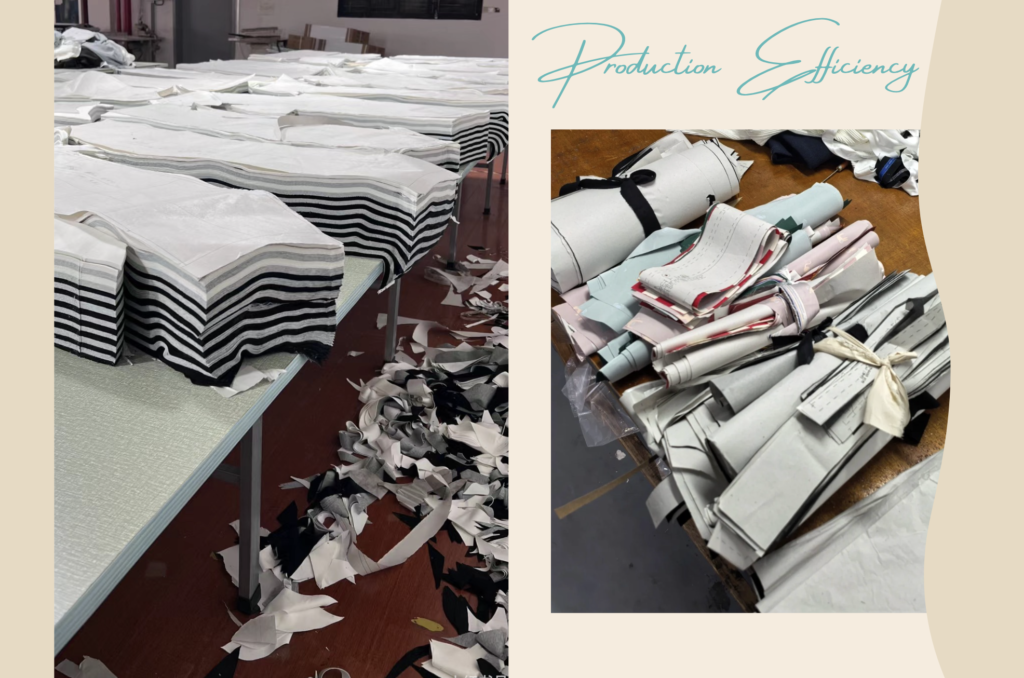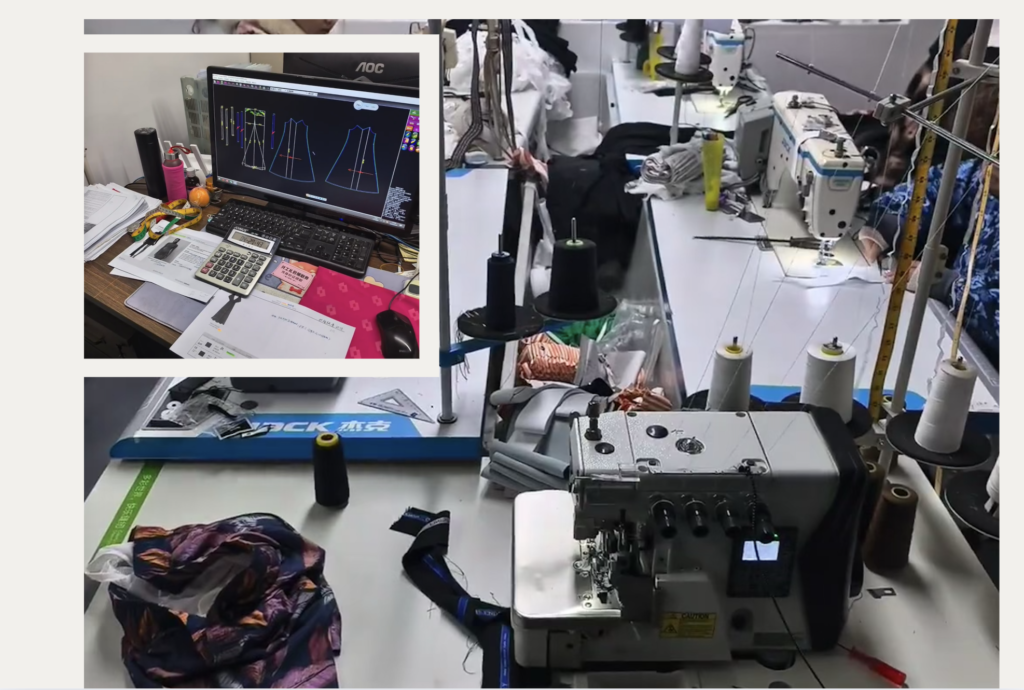When reaching out to a clothing manufacturer, whether you’re launching a new clothing line, designing for a well-established brand, or exploring new manufacturing partners, one of the first questions you’ll be asked is: “What’s your order quantity?”. This question helps manufacturers assess your business size, understand your needs, and determine if they’re the right fit for your brand. But have you ever wondered why manufacturers set MOQs, and what factors are involved in determining them?


What is MOQ in Clothing Manufacturing?
MOQ, or Minimum Order Quantity, which is the smallest number of units a manufacturer is willing to produce for a specific design or product. This quantity is established to ensure that the order is large enough to cover the costs involved in the production process.
For a clothing manufacturer, there is a lot of preparation, set-up, efforts and labour that goes into completing an order. Manufacturers have Minimum Order Quantities to make sure an order is big enough to balance their production costs while ensuring they are making a profit. For anyone involved in fashion, whether you’re just starting or managing an established brand, understanding MOQ is essential for planning production, managing costs, and ensuring the smooth operation of your clothing line.
Why Do Manufacturers Set Minimum Order Quantities?
Lower Production Costs
One of the main reasons factories require a MOQ is to control production costs. Clothing production involves a range of fixed expenses that are unavoidable no matter the size of the order. These include machine setup, material procurement, labor costs, and quality control procedures, etc. So when producing larger orders, the cost per unit decreases because of economies of scale. That means the higher the quantity, the lower the price per unit. For example, cutting fabric for 30 pieces takes almost the same amount of time as cutting fabric for 300 pieces, but the cost per unit is significantly reduced with larger orders.
Production Efficiency


Manufacturing clothing is a complex process that involves several stages, from fabric sourcing to cutting, sewing, and finishing, each step requires time, labor, and machinery. Workers often need time to get used to a new design.
When a small order is placed (e.g., 30 to 50 units), workers have to switch from one design to another frequently, result it inefficiency and increased production time. For instance, workers may need to adjust stitch types, thread colors, or machine settings each time they switch designs. On the other hand, larger orders allow workers to focus on producing the same design for a longer period. As they become more familiar with the design, their productivity increases, reducing overall labor costs and shortening production timelines. This boosts efficiency and helps ensure a smoother workflow, ultimately reducing the cost per unit.
MOQ is Negotiable
While many manufacturers have a standard MOQ, it’s often negotiable, depending on the circumstances. As a women’s clothing manufacturer, we are always open to discussing MOQ based on your specific needs. However, it’s important to understand the factors that influence MOQ before negotiating.
Complexity of Construction
The more complicated a garment’s design, the higher the MOQ is likely to be. Complex designs with features like panelling, layering, or lacing require additional setup time and labor to produce. For example, producing a simple t-shirt might take 2-3 hours per unit, whereas a pair of cargo trousers with multiple pockets, zippers, and reinforced stitching might take 6-8 hours per unit. This added time and labor increase the production cost, which is why higher MOQs are often necessary for more complex designs to balance the cost of production.
Moreover, when the garment features color panels, each panel requires a separate dyeing process, resulting in additional dyeing setup fees. The fee is at least 150 RMB per color. If a garment has 3 color panels, that would be at least 450 RMB surcharge for color DTM only. Therefore, a higher MOQ is necessary to ensure these costs are spread out and maintain the overall profitability of the production.


Fabric Choice
Manufacturers don’t stock fabrics themselves, they source them from fabric suppliers, who often have their own minimum order quantities of at least one roll of fabric per colour. Manufacturers then set MOQ based on how many units could be made from the fabric roll. For example, if a fabric roll is 100 meters long and each garment requires 2 meters of fabric, that roll can produce only 50 units. In this case, the MOQ for that garment would likely be 50 units. If you are producing small items, like crop tops, which use less fabric per unit, the MOQ may be higher. This is because a smaller garment consumes less fabric, meaning more garments can be made from a single roll of fabric.
However, if you don’t want to producea large quantity, some fabric suppliers offer the option to purchase less than one full roll but there is surcharge per fabric meter. This cost will be reflected in the garment’s overall cost. If you are fine with these additional costs and the manufacturer is willing to accept a smaller order, then a lower MOQ might still be feasible.
What If You Can’t Meet the MOQ?
If you’re unable to meet the MOQ, you may consider alternative options.
Wholesale Options and Private Labeling
Wholesalers often offer a wide range of the styles with much lower MOQ, sometimes as low as 5 units per style, allowing you to access competitive prices even with small orders. This is a great option for startups or brands that are just getting started and may not be able to meet the higher MOQs of traditional manufacturers.
In addition to low MOQs, many wholesalers also offer private labeling services. You can rebrand under your own label. This allows you to build a product range under your own brand without needing to invest in custom designs or larger production runs. This option is especially great for testing the market or expanding your product line without the risk of overstock or excessive inventory costs.
Optimize Your Product Range and Designs
You can simplify your collection by limiting the number of styles or colors. By selecting the same fabric for multiple styles, manufacturers can purchase fabric that meets the MOQ requirements, thus reducing your overall order quantity.
Our MOQ is flexible
There is no set MOQ. It all depends on what the individual manufacturer is willing to take on. A manufacturer has to consider factors such as set up, labour and overheads and make sure that an order is viable for them.
Larger factories may only consider orders of 1000 units or more, while we offer a low MOQ and flexible, depending on the garment’s complexity.
Let’s Work together & Grow Together
If you are looking for a reliable and flexible factory partner to bring your collection to life, we’re here to offer you a flexible and efficient solution that fits your needs.
Ready to discuss your production needs? Contact us today to find a tailored solution that works for you!


